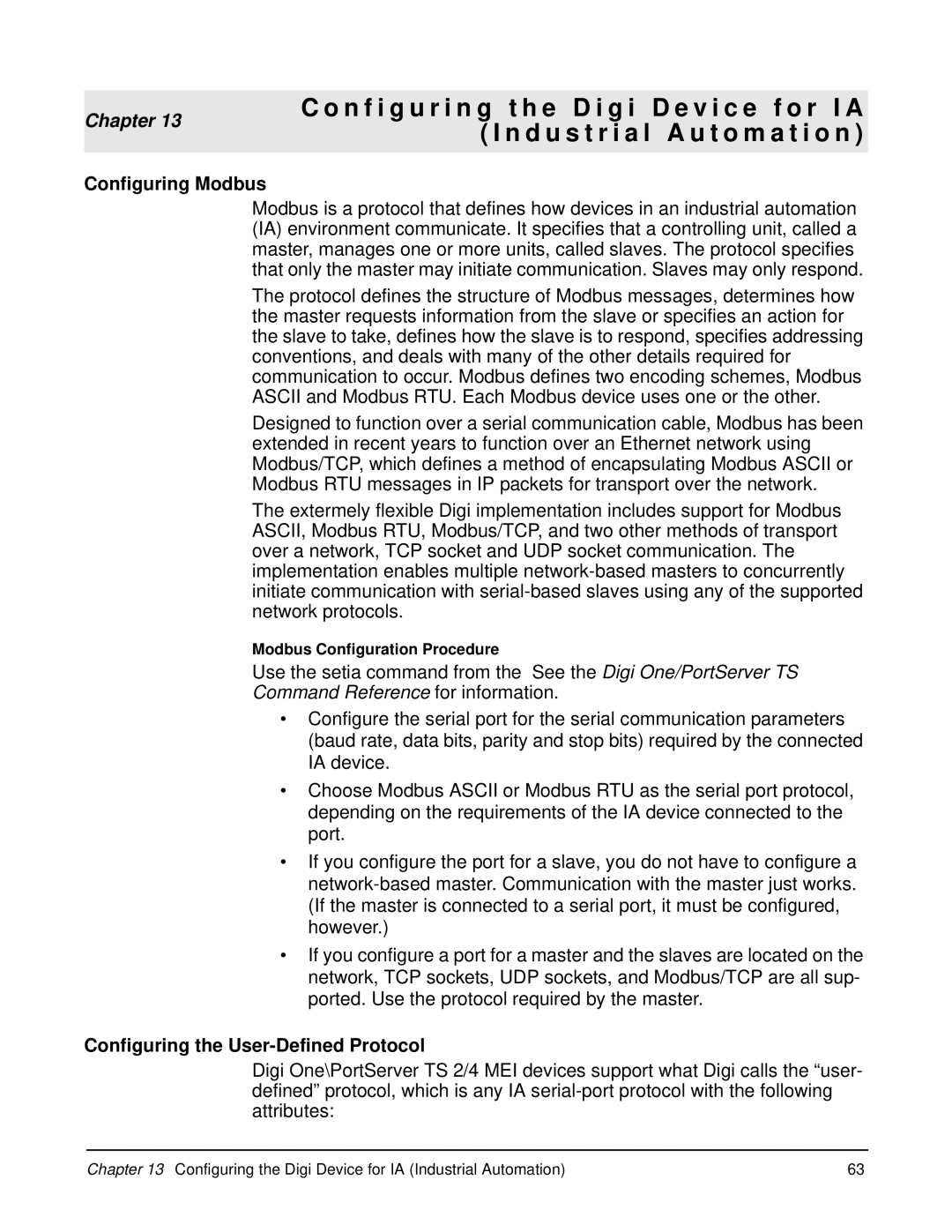
Chapter 13
Configuring Modbus
C o n f i g u r i n g t h e D i g i D e v i c e f o r I A ( I n d u s t r i a l A u t o m a t i o n )
Modbus is a protocol that defines how devices in an industrial automation (IA) environment communicate. It specifies that a controlling unit, called a master, manages one or more units, called slaves. The protocol specifies that only the master may initiate communication. Slaves may only respond.
The protocol defines the structure of Modbus messages, determines how the master requests information from the slave or specifies an action for the slave to take, defines how the slave is to respond, specifies addressing conventions, and deals with many of the other details required for communication to occur. Modbus defines two encoding schemes, Modbus ASCII and Modbus RTU. Each Modbus device uses one or the other.
Designed to function over a serial communication cable, Modbus has been extended in recent years to function over an Ethernet network using Modbus/TCP, which defines a method of encapsulating Modbus ASCII or Modbus RTU messages in IP packets for transport over the network.
The extermely flexible Digi implementation includes support for Modbus ASCII, Modbus RTU, Modbus/TCP, and two other methods of transport over a network, TCP socket and UDP socket communication. The implementation enables multiple
Modbus Configuration Procedure
Use the setia command from the See the Digi One/PortServer TS
Command Reference for information.
•Configure the serial port for the serial communication parameters (baud rate, data bits, parity and stop bits) required by the connected IA device.
•Choose Modbus ASCII or Modbus RTU as the serial port protocol, depending on the requirements of the IA device connected to the port.
•If you configure the port for a slave, you do not have to configure a
•If you configure a port for a master and the slaves are located on the network, TCP sockets, UDP sockets, and Modbus/TCP are all sup- ported. Use the protocol required by the master.
Configuring the User-Defined Protocol
Digi One\PortServer TS 2/4 MEI devices support what Digi calls the “user- defined” protocol, which is any IA
Chapter 13 Configuring the Digi Device for IA (Industrial Automation) | 63 |
